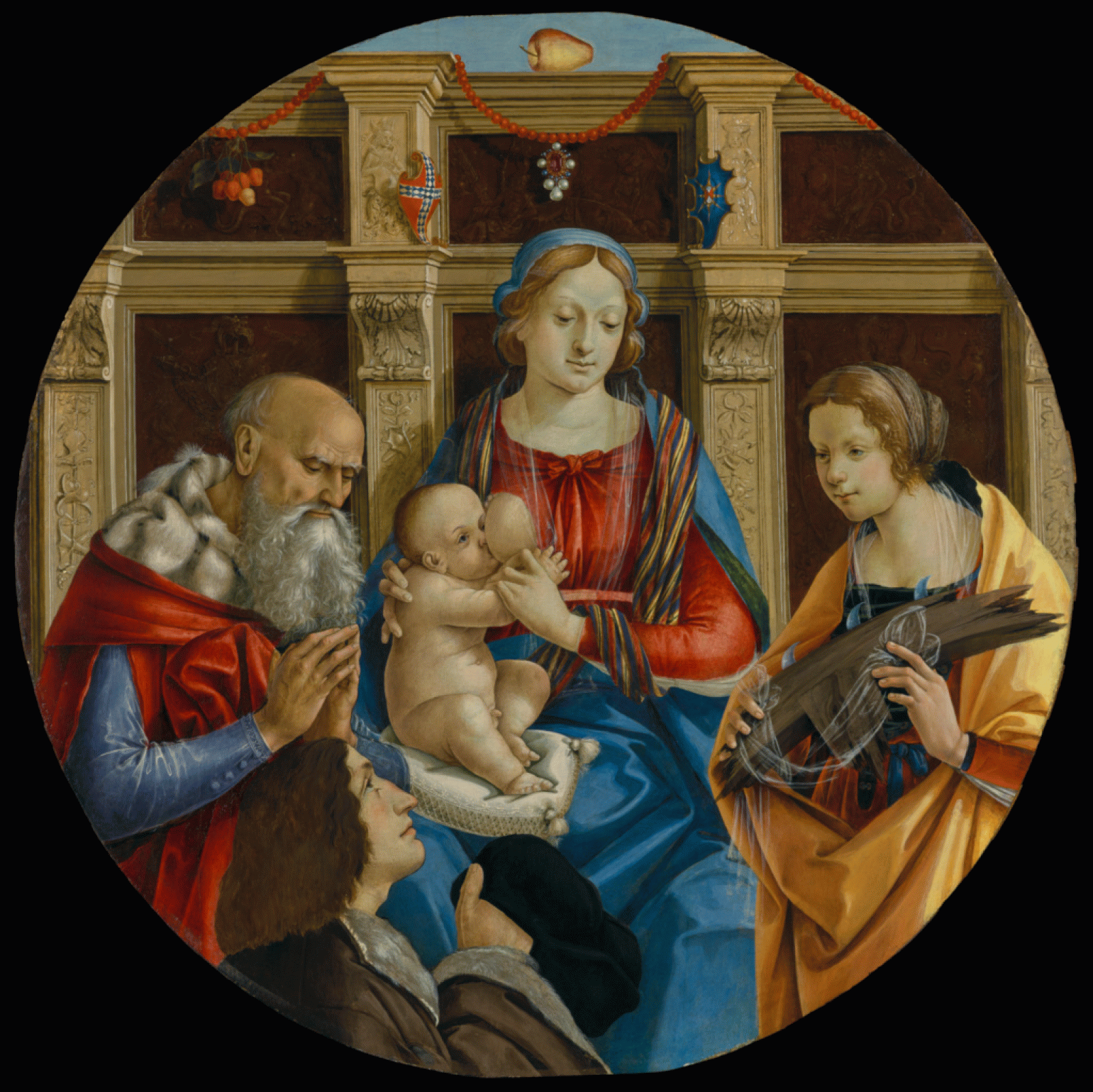Research
Painting in Lucca in the Late Fifteenth Century: A Problem in Artistic Geography
Christopher Daly | David Finley Fellowship

Michelangelo di Pietro Membrini (Italian (Lucchese), 1461/1464 - 1525) Madonna and Child with a Male Saint, Catherine of Alexandria and a Donor, about 1496, Tempera on panel 101.6 × 101.6 cm (40 × 40 in.), 68.PB.4 The J. Paul Getty Museum, Los Angeles .
My dissertation “Painting in Lucca in the Late Fifteenth Century: A Problem in Artistic Geography” focuses on the painters active in Lucca in the late fifteenth century to examine how the art production in a region of Renaissance Italy typically treated as “peripheral” or “provincial” can help rethink the supremacy of a more canonical “center.” Lucca is a suitable case study for this analysis because all of the city’s painters from this period (Baldassarre di Biagio, Michele and Sano Ciampanti, Vincenzo Frediani, Antonio Corsi, Michelangelo di Pietro Membrini, etc.) emerged in scholarship as hypothetical “Masters” invented by connoisseurs on the basis of the detectable influences in their works. As a result, the Lucchese are traditionally—and paradoxically—cast as mere “eclectics” practicing a “homogeneous local style” derived primarily from the city’s imports from Florence (Domenico Ghirlandaio and Filippino Lippi), Bologna (Francesco Francia and Amico Aspertini) or the Netherlands (Jan van Eyck). Yet my study argues that this assessment minimizes the complexity of Lucchese painting, overlooking the dynamic patterns of mobility, dialogue, and exchange evidenced in the painters’ extant works and archival biographies. Moving beyond anachronistic and geographically biased notions of unidirectional “influence,” my study aims to not just acknowledge, but also interpret and contextualize the artists’ individual stylistic choices and citational tendencies. In so doing, it demands a broader reconsideration of how artistic style is tethered to location, the notion of a unidirectional cultural influence, and how the term “eclecticism” is mobilized in art history. The study concludes with the first-ever catalogue raisonnés for each Lucchese painter active ca 1460-1525.


